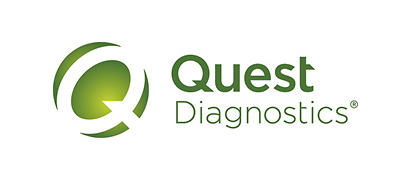The Ovarian Assessment Report is a measure of egg supply, which is only one factor required for establishing and maintaining a successful pregnancy. Many other important factors contribute to overall fertility potential. Ovarian reserve testing alone should not be used as the sole determinant for treatment recommendations.
Test codes:
- 14115 Ovarian Assessment Report (OB/GYN format)
- 14116 Ovarian Assessment Report (REI format)
The Ovarian Assessment Report is a relative measure of the patient’s ovulatory egg supply. This egg supply model was developed using data from fertility centers and egg retrieval results following controlled ovarian hyperstimulation.
The Ovarian Assessment Report measures anti-mullerian Hormone (AMH), follicle-stimulating hormone (FSH), estradiol, luteinizing hormone (LH), and inhibin B.
Shown on the OBGYN format of the Ovarian Assessment Report (OAR), the ESS is a proprietary calculation that integrates multiple hormone values and the patient’s age to generate an index score from 1 to 20. The ESS can aid clinicians in the overall interpretation of the patient’s hormone results within the context of her age and her likely ovulatory egg supply.
Shown on the Reproductive Endocrinology and Infertility (REI) format of the OAR, the ERS is a proprietary calculation that integrates multiple hormone values and the patient’s age to generate an index score from 1 to 20. The ERS can aid clinicians in the overall interpretation of the patient’s hormone results within the context of her age and her likely response to controlled ovarian hyperstimulation and subsequent egg retrieval.
No, the OAR does not directly measure egg quality, but the report does provide educational information about the relationship between a patient’s age and egg quality.
The specimen must be collected on day 2, 3, or 4 of the menstrual cycle, with day 1 defined as the first day of full menstrual flow.
Yes, exogenous hormones such as contraceptive pills, patches, and rings have been shown to affect most measures of ovarian reserve including anti-mullerian hormone (AMH), follicle-stimulating hormone (FSH), and antral follicle counts. AMH and FSH are included in the Ovarian Assessment Report. Clinicians should interpret results with caution when testing patients who are on contraceptive hormones.1,2
The OBGYN format (TC 14115) of the OAR is available for patient age 22 to 54. The REI formation (TC 14116) is available for patient age 21 to 54. A report cannot be generated for patients outside of those ranges.
Published research in this area suggests that the influence of exogenous hormones may resolve in 2 natural cycles (2 months).1,2
Women who are currently being evaluated for infertility and patients who are planning for a future pregnancy can benefit from the Ovarian Assessment Report.
Two versions of the report exist to accommodate the unique patient counseling needs for each specialty. Both reports measure the same hormones and use the same algorithm to develop an index score.
The OBGYN version of the report is designed to support OBGYN and patient conversations related to evaluating egg supply and provides the clinician and patient with information about how the patient’s score compares to other women her age. The REI version is designed to support the fertility specialist and patient discussion about the likely response to ovarian stimulation and has a heavier focus on how many eggs the patient will likely produce if she were to undergo ovarian stimulation followed by egg retrieval.
References
- Kallio S, Puurunen J, Ruokonen A, et al. Antimüllerian hormone levels decrease in women using combined contraception independently of administration route. Fertil Steril. 2013;99(5):1305-1310. doi: 10.1016/j.fertnstert.2012.11.034
- van den Berg MH, van Dulmen-den Broeder E, Overbeek A, et al. Comparison of ovarian function markers in users of hormonal contraceptives during the hormone-free interval and subsequent natural early follicular phases. Hum Reprod. 2010;25(6):1520–1527. doi:10.1093/humrep/deq071
This FAQ is provided for informational purposes only and is not intended as medical advice. A physician’s test selection and interpretation, diagnosis, and patient management decisions should be based on the physician’s education, clinical expertise, and assessment of the patient.
Document FAQS.327 Version: 0
Version 0 effective 09/22/2025 to present





